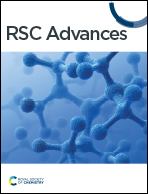Organic dye-loaded reduced titanium dioxide as a broadband saturable absorber for ultrafast fiber lasers
Abstract
As a rising star among metal oxide nanomaterials, titanium dioxide (TiO2) has been widely investigated and employed in optical applications because of its excellent optical properties. In this work, we demonstrate the efficient and broadband nonlinear photonic properties of methylene blue (MB)-loaded reduced TiO2 (TiO2−x-MB) and explore the performance of a TiO2−x-MB-microfiber photonic device in broadband ultrafast photonics. Within an erbium-doped fiber laser (EDFL) system, utilizing the TiO2−x-MB-microfiber photonic device as a saturable absorber (SA), steady mode-locked pulses together with chaotic pulses were successfully achieved at the wavelength of 1.55 μm. Furthermore, by incorporating the TiO2−x-MB SA into a thulium-doped fiber laser (TDFL) system, an ultrashort single pulse and multiple pulses were obtained at 2.0 μm. These results indicate that TiO2−x-MB is an excellent nanomaterial for use in mode-locked lasers, being an alternative candidate for ultrafast fiber lasers via exploiting the chemical and physical properties of oxide nanomaterials.



 Please wait while we load your content...
Please wait while we load your content...